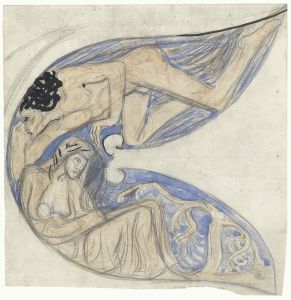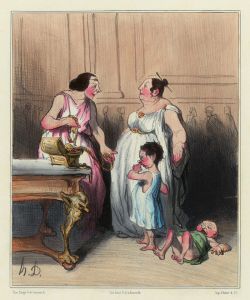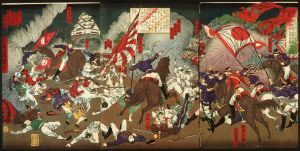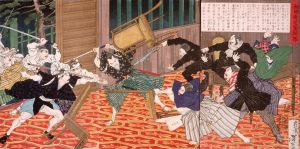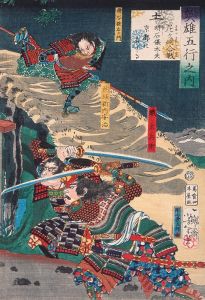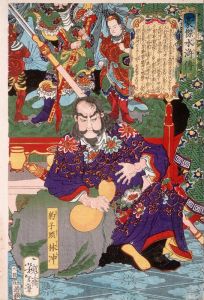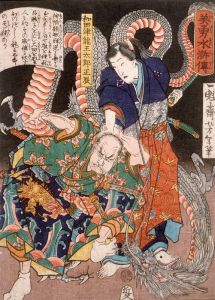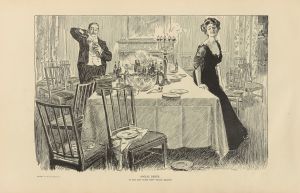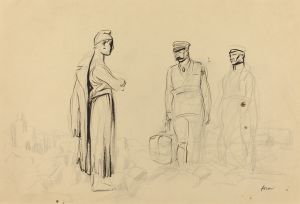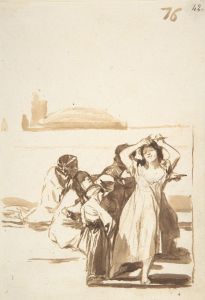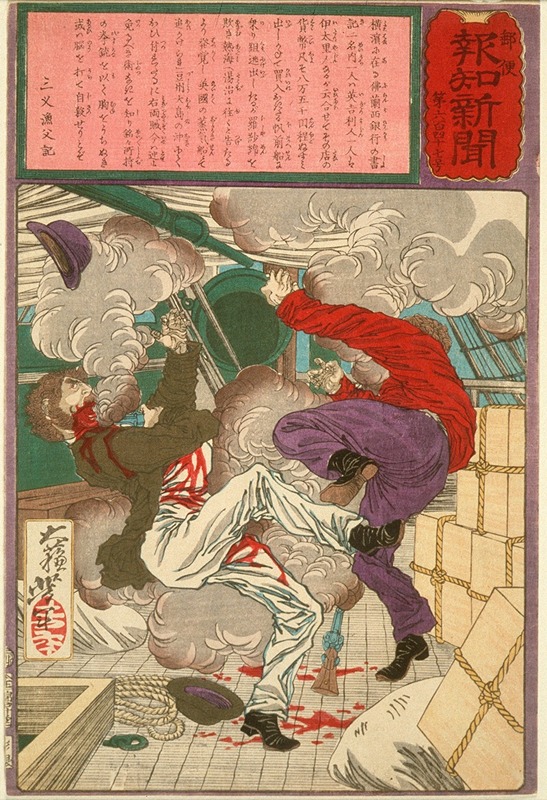
The Suicide of Two Foreign Clerks
A hand-painted replica of Tsukioka Yoshitoshi’s masterpiece The Suicide of Two Foreign Clerks, meticulously crafted by professional artists to capture the true essence of the original. Each piece is created with museum-quality canvas and rare mineral pigments, carefully painted by experienced artists with delicate brushstrokes and rich, layered colors to perfectly recreate the texture of the original artwork. Unlike machine-printed reproductions, this hand-painted version brings the painting to life, infused with the artist’s emotions and skill in every stroke. Whether for personal collection or home decoration, it instantly elevates the artistic atmosphere of any space.
"The Suicide of Two Foreign Clerks" is a woodblock print by the renowned Japanese artist Tsukioka Yoshitoshi, created in 1868. Yoshitoshi is celebrated for his innovative approach to the traditional ukiyo-e art form, and his works often reflect the social and political changes occurring in Japan during the late Edo and early Meiji periods. This particular print is part of Yoshitoshi's series "Yokohama-e," which depicted scenes involving foreigners in Japan, a theme that gained popularity following the opening of Japan to the West in the mid-19th century.
The artwork captures a dramatic and somber moment involving two foreign clerks. The depiction is notable for its emotional intensity and the way it reflects the cultural exchanges and tensions of the time. During the late 19th century, Japan was undergoing significant transformation as it transitioned from a feudal society to a more modern state. This period, known as the Meiji Restoration, saw the influx of Westerners and Western ideas, which had a profound impact on Japanese society and culture.
Yoshitoshi's print is significant not only for its artistic merit but also for its historical context. The presence of foreign nationals in Japan was a relatively new phenomenon, and their interactions with Japanese society were complex and multifaceted. The print illustrates the challenges and sometimes tragic outcomes of these interactions, as symbolized by the suicide of the two clerks. This theme of cultural collision and the resulting personal tragedies were common in the Yokohama-e genre, which sought to document and comment on the rapidly changing world of 19th-century Japan.
Yoshitoshi's work is characterized by its dynamic composition and expressive use of color and line. In "The Suicide of Two Foreign Clerks," he employs these techniques to convey the emotional gravity of the scene. The figures are rendered with a sense of realism and immediacy, drawing the viewer into the narrative. The background and setting are also carefully detailed, providing context and enhancing the overall impact of the piece.
This print is an example of how Yoshitoshi and his contemporaries used art to explore and critique the societal changes of their time. By focusing on the experiences of foreigners in Japan, Yoshitoshi provides insight into the complexities of cultural integration and the personal stories that unfolded during this transformative period. His work remains a valuable resource for understanding the historical and cultural dynamics of Meiji-era Japan.
Overall, "The Suicide of Two Foreign Clerks" is a poignant and thought-provoking piece that reflects both the artistic innovation of Tsukioka Yoshitoshi and the broader historical context of Japan's encounter with the West. Through his masterful use of the ukiyo-e medium, Yoshitoshi captures a moment of profound human emotion and cultural significance, making this print an important part of his artistic legacy.





